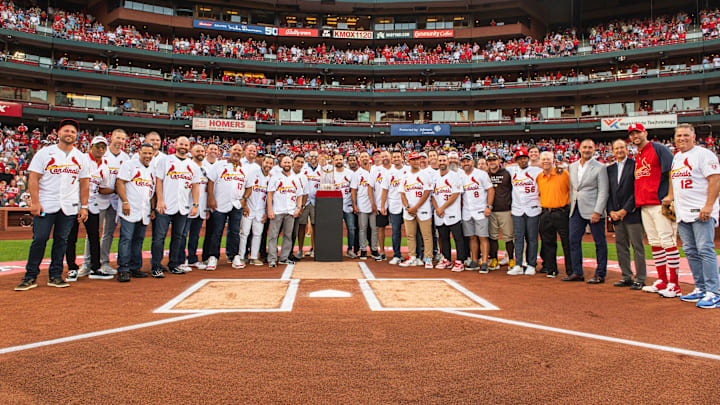It appears the Cardinals are trying to recreate what they had in 2011. That was the last year the Cardinals won a World Series, and if you are going to duplicate a year, that would be a good one to pick. In the dugout were players such as Lance Lynn, Matt Carpenter, Daniel Descalso, and Yadier Molina. This year, in 2024, we could see all four players in the dugout again. It was long enough ago, though, that two of those mentioned are now retired and will be here as coaches.
The most substantial part of this offseason that makes it look like the Cardinals are looking for answers in the wrong decade is their quest for “innings eaters”. The Cardinals had four pitchers that made it to 175 innings or more that year. In 2011, 39 pitchers pitched over 200 innings. Those 39 pitchers threw 97 complete games. A whopping total of 77 pitchers in the MLB threw for over 175 innings and combined for 130 complete games. Inning eaters then were necessary. The four teams that were in the championship series that year had seven pitchers who had over 200 innings each. Almost two on each team.
This is no longer 2011. Over the last 13 years, pitching philosophy throughout the league has changed. Last year, only five pitchers completed over 200 innings and complete games are now a rarity with only 6 being thrown in 2023. There was only one pitcher that had over 200 innings pitching on the four teams in last year’s AL or NL championship series.
Most teams now are managing pitching staffs differently. Instead of trying to be Bob Gibson and complete the game, the goal is to throw as hard as you can, with swing-and-miss stuff, and do that knowing you will only see the batter twice. Innings pitched per game by starters in 2011 was 6.0, and last year was 5.1. Despite the comments from the Cardinals about how the starters didn’t go far enough in games, they remarkably averaged 5.2 innings per start, better than the league average.
To drive this point home another way, in 2011 there were 2,343 games in which the starting pitcher threw over 100 pitches. Last year there were only 767 games. Teams have decided that pitch quality and swing and miss are more valuable than pitch quantity. 53 percent of the starts in 2011 were quality starts. Last year that percentage dwindled to 35 percent.
The Cardinals are trying to address a 2024 problem using 2011 methods. So why are the Cardinals doing this? Their logic is that if the starters go deeper in games, there won’t be so much strain on the bullpen. My question is if the starters lasted longer than the league average last year, have they correctly identified the problem?
They talk about the overworked bullpen but the Cardinals had the 11th fewest innings pitched by relievers. The strain had nothing to do with innings. In 2023, the Cardinals had the third most runners on base when a reliever entered the game and only one other team had fewer times having their relievers enter the game with no runners on base. The manager put the relievers in high-leverage situations more than almost any other team. No other team in baseball had their relievers pitch over one inning more than the Cardinals. The starting pitcher facing an extra batter or two will address none of these problems. It just means the high-leverage situation will come a couple of batters later in the game.
Even if the Cardinals believe they are just smarter than everyone else and decided to zig when everyone else zagged, there is still one big flaw in their thinking. In 2011, the average age of the pitchers that amassed those 200-inning seasons was 29. The Cardinals’ average age of their starters is 35.
I am not sure this is the year the Cardinals will get into their Delorean and make it back to the future.
